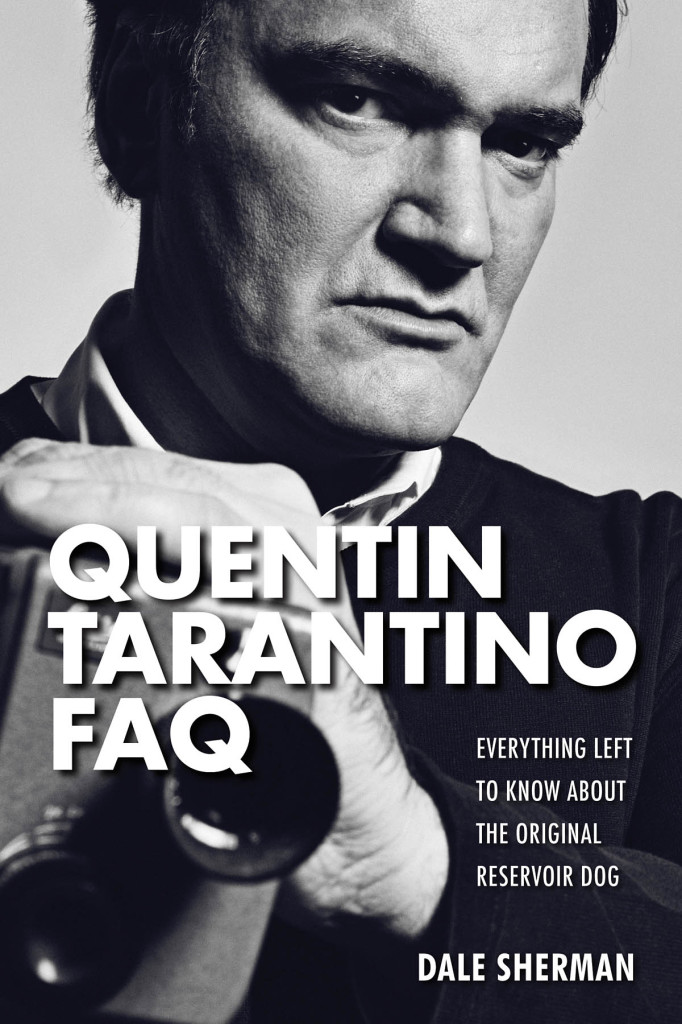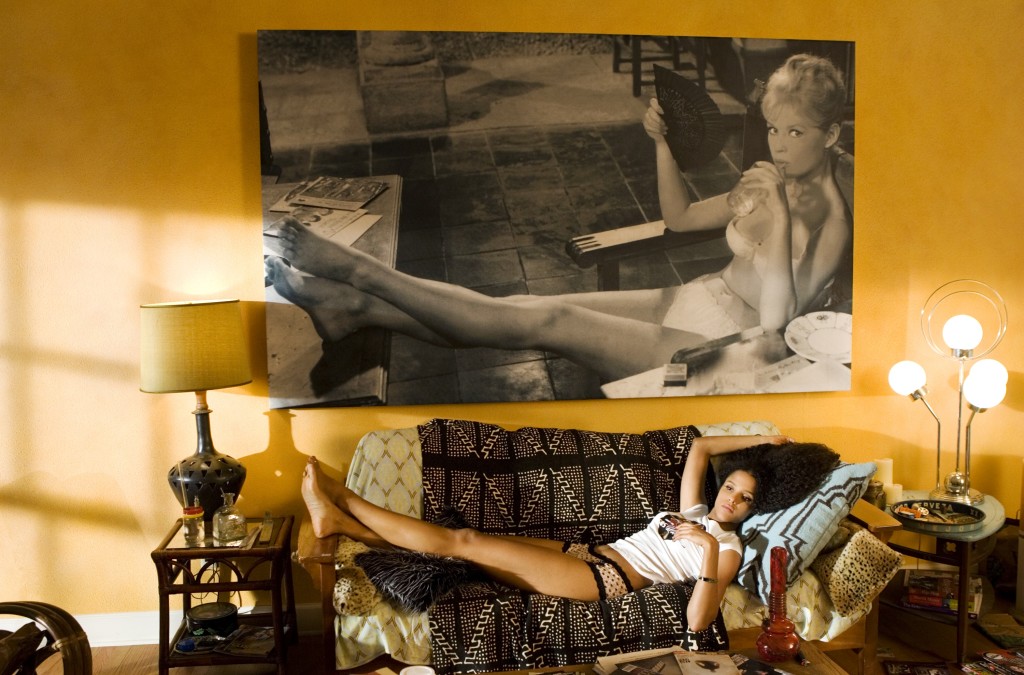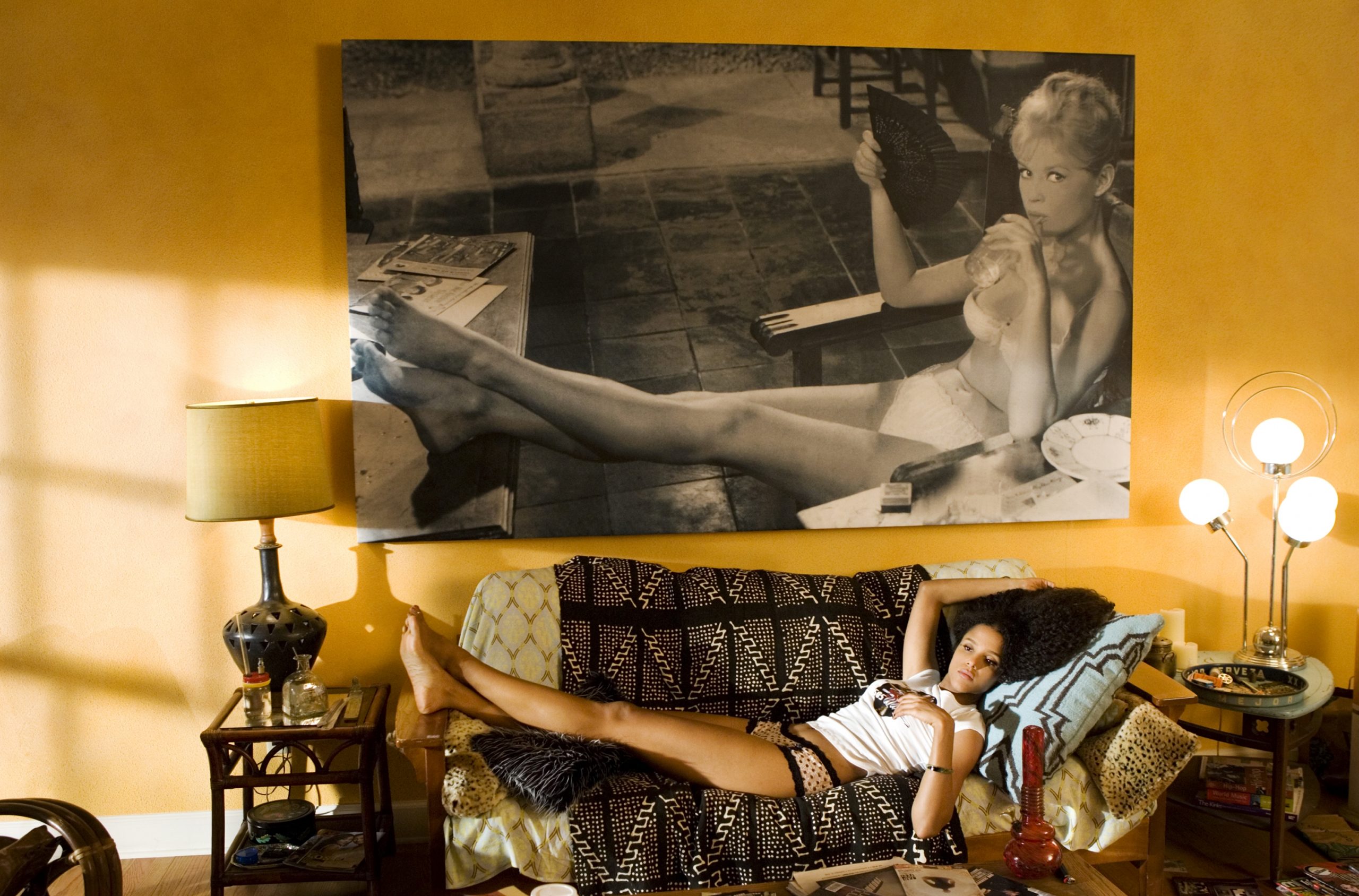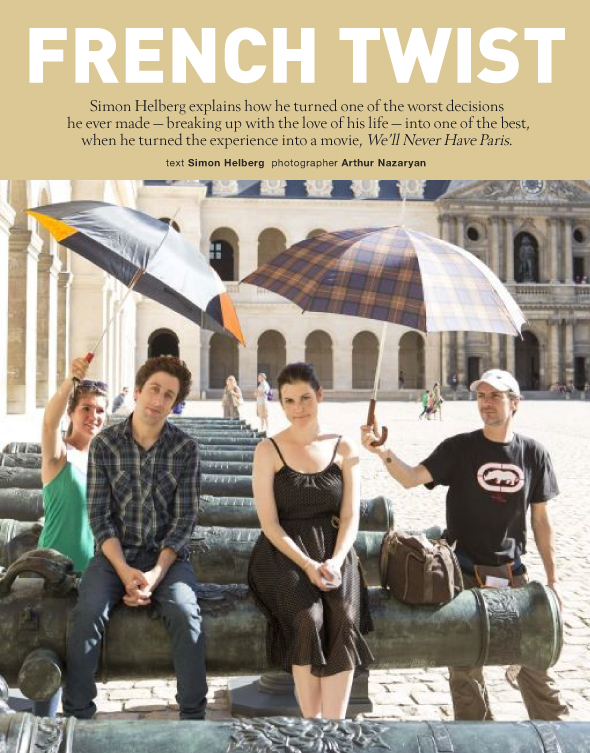 AN EXCELLENT VIEW OF MY FOOT
AN EXCELLENT VIEW OF MY FOOT
Frequent Visuals and Concepts in Tarantino Films
Whether you love or hate Tarantino, one of the first things you’ll learn from his movies is that he really has a deep, deep interest in feet. Namely the feet of the actresses in his movie. With lots of close-ups and nice lighting. Not gratuitous, mind you. No joke—he usually comes up with reasons within his scripts for his camera to pan down those gams and take a look at those toes (such as when Kiddo is trying to get her legs working again in Kill Bill, Volume 1, or Melanie being filmed only from the feet down in a sequence in Jackie Brown).
Yet the—rather mild—foot fetish (well, okay, him getting to suck on Salma Hayek’s toes in From Dusk Till Dawn is a bit of a kink, but—hey—he didn’t even direct that one, so you can’t blame him) is only one type of cinematic touch that repeatedly turns up in his films. There are several that Tarantino has used, some of which are almost expected by fans when watching one of his movies (when possible; for example, the audience may not get the traditional “Trunk POV” in Inglourious Basterds, but we do at least get a nice “Corpse POV” for the finale).
Besides such camera moves, Tarantino has also made a tradition out of certain props, clothes, or other elements that pop up in more than one of his movies. That gasoline can in Reservoir Dogs seems to travel a lot, for example. Such items can be seen as nothing more than coincidences, but others are clearly “Easter eggs”—a term that came into being when movies and television shows would be released on DVD with extra footage hidden on a disc and is now used to describe visual surprises in the background of movie scenes that may not be spotted at first, like the group of E.T.s in The Phantom Menace (1999).
There are some elements that pop up in more than one film that could fall under this definition as well, but a lot of these are standard type of textbook camera shots that really do not represent a consistent Tarantino touch (such as sequences featuring people talking in cars, which is seen in 99 percent of movies anyway). There have also been homages to his earlier films that don’t quite fall into this category either (such as Kiddo in Kill Bill, Volume 1 making the “don’t be a square” hand sign as an obvious tribute to Uma Thurman’s earlier role in Pulp Fiction). Instead, this chapter details some of the various repeated visual treats and other tricks of the trade that Tarantino has used in more than one of his films that aren’t quite as noticeable until you’ve seen a few of his movies.
FOOT SHOOT
Since it has already been discussed, it is best to start with the big one. Tarantino tends to show feet in loving close-up in a number of his movies.
My Best Friend’s Birthday—The script for this incomplete early film cowritten by Tarantino has Clarence, Tarantino’s character, admitting to a foot fetish.
Reservoir Dogs—No, I’m messing with you. There’s no one who has feet that anyone would want to see in close-up in this film.
Pulp Fiction—In dialogue there is the entire Tony “Rocky Horror”/foot massage dialogue that occurs between Jules and Vincent early in the film and is brought up again between Vincent and Mia at Jackrabbit Slim’s. It’s only fitting that our first view of Mia after seeing her lips is of her bare feet slowly swaying down the hall in her house. She is also barefoot in the dance competition at Jackrabbit Slim’s. Since the foot massage dialogue hints at how Marsellus deals with anyone even hinting at being intimate with his wife, Tarantino shows us this “temptation” often to remind us how close Vincent is to danger.
As Esmeralda, the taxi driver talking to Butch after the fight, drives him away, there is a close-up of her foot on the pedal, and it is clear she is barefoot (this isn’t quite unusual for some drivers, actually).

It’s all in the feet, and there’s plenty of them on display in Death Proof (2007), as seen here with Jungle Julia (Sydney Tamiia Poitier).
Four Rooms—Angela, the main female character in Tarantino’s segment of the anthology film, is barefoot throughout.
From Dusk Till Dawn—Santanico Pandemonium is barefoot and lets Richie intimately know it, right before she reveals herself to be a vampire. Here we have Richie—a man with severe women issues—being completely dominated by a woman (who, as it turns out, is the major villain of the story as well). Richie also fantasizes about Kate (the daughter) while looking at her feet in the RV.
Jackie Brown—Both Jackie and Melanie are barefoot at times in the film. The shot of Melanie’s feet in the women’s changing room is a nice bit of acting on Bridget Fonda’s part as she manages to convey Melanie having heard what Jackie advised and had made her decision with only her feet showing on-camera.
Kill Bill—Kiddo is barefoot when the sheriff approaches her body in the church. She is also, naturally, barefoot in the hospital, and it is pivotal that the audience see her feet being “dead” and Kiddo working to get her toes moving once again. O-Ren runs across the table in her bare feet when attacking the boss at the end of the table in the meeting. We later get a close-up of her feet as she arrives at the House of Blue Leaves in traditional Japanese garb while wearing stockings, suggesting that O-Ren tries to present herself in a traditional Japanese role as the head of the Yakuza in order to avoid any talk of her mixed heritage.
Kiddo is barefoot upon being buried alive and continued to be through the battle with Elle Driver in the trailer, suggesting a sense of vulnerability versus her attacker. Budd is barefoot when he meets his end with Elle. Both Kiddo and Bill are barefoot in their final confrontation.
Death Proof—From the start of the movie, up through the convenience store scene in the second half of the film, there are feet sticking out all over the place. Of course, this leads to a whole limb being tossed off into the street after the fatal accident with Stuntman Mike’s car, so it goes to show that perhaps one should be more careful when in a car.
Inglourious Basterds—Bridget gets shot in the basement tavern, being stuck in the middle of the crossfire. This leads to her barefoot at a veterinarian’s office to get fixed up (leaving her shoes behind for Landa to find and match up to Bridget’s right foot at the theater). Landa has her take off her right shoe and put her foot in his lap and fondle it for a bit before verifying that “the shoe fits.”
Django Unchained—Django and his fellow slaves at the beginning of the movie are seen barefoot, but of course this is not quite the same as other references given above (although it certainly shows the torturous existence of these men and women).
TRUNK POINT-OF-VIEW (POV)
From Reservoir Dogs onward, Tarantino has make frequent use of camera shots from inside the trunk of a car as characters open it up, typically so that they can display something inside to others with them.
Reservoir Dogs—Mr. Blonde shows off the police officer he kidnapped to Mr. White and Mr. Pink.
Pulp Fiction—Jules and Vincent get ready for their confrontation with Brett and his friends.
From Dusk Till Dawn—Seth and Richie open up the trunk of their car to pull out their hostage at the hotel.
Jackie Brown—Ordell convinces Beaumont to get into the trunk. We also see a shot from a trunk when Jackie is putting money into her clothing for the big fix.
Kill Bill—Kiddo opens the trunk to reveal Sofie Fatale inside.
Death Proof—In a slight reversal, the women open the hood of the 1970 Dodge Challenger to look at the engine.
CORPSE POV
This is very similar to the Trunk POV, only it . . . well, it doesn’t involve a car. Otherwise it’s pretty much the same, although the camera angle is more perpendicular rather than at a 45 degree angle like it would be from a trunk. It’s referred to a “Corpse POV” as it indicates what a corpse would see. It’s not that unusual of a shot and can be seen in a variety of movies and television shows over the years (the classic cliché of the doctors and nurses above as a patient is being wheeled into an operation room), and the television series M*A*S*H built a whole episode around the use of this camera angle. Tarantino has also used a similar POV shot that has a character looking straight on into the camera while talking to or listening to another character (or as when Mia pulls her head up in the Jackrabbit Slim’s bathroom and is looking at herself in the mirror), but this is not as frequent as the “Corpse POV” used in the examples below.
Pulp Fiction—As Marsellus wakes up after being hit by Butch in the car to see people staring down at him.
Jackie Brown—After Odell is killed, such a shot appears from his cold, dead eyes to look up at Jackie and Ray, looking down at him.
Kill Bill—The Deadly Vipers and later Sheriff McGraw are both photographed this way over Kiddo in the church. Budd looks at Kiddo in a similar fashion while preparing for her “final resting place.” Elle Driver is viewed briefly in a similar manner after Budd is attacked by her snakes.
CSI: Crime Scene Investigation, “Grave Danger”—Such a shot appears in the two-parter finale Tarantino directed.
Death Proof—Stuntman Mike gets a good look at one of the girl’s gams before getting his face smashed in at the end of the film.
Inglourious Basterds—Landa looking up at the remaining Basterds after getting Lt. Aldo’s “masterpiece.”
BIRD’S-EYE VIEW
Sometimes referred to as the God Shot, Eye of God POV, or variations of that. It refers to an angle where the camera is directly above the action, as if looking down from the sky (hence, bird’s-eye view, or the angle God would see things from Heaven). Tarantino uses this shot in at least three of his films, most noticeably in the Kill Bill features.
Jackie Brown—As Jackie gets the bag ready with the money in the plane’s bathroom, the camera takes on this angle to show off the money in the bag and the cramped conditions she is working within. There is also a similar type of shot later in the film in the women’s changing room when she put the money in the bag for Melinda to pick up.
Kill Bill—In Vernita’s house. At least twice in the House of Blue Leaves fight sequence. Budd with the suitcase of cash in his trailer. Kiddo crying in the bathroom of the hotel room in the finale of the second Kill Bill movie.
Django Unchained—The camera looks down on Broomhilda as water is poured on her once the sweat box is opened.
SWITCH TO AND FROM BLACK-AND-WHITE FILM
Tarantino had envisioned such a switch in film in his script for Natural Born Killers (and even at one time considered filming Reservoir Dogs in black and white), but he would not get around to using the device until he got to the Kill Bill films. This was in part a necessity due to the violence of the scenes, as—to be frank—blood is a lot easier to take for a viewer (and the MPAA) if it looks like a lot of black stuff on someone’s face. In the first scene we see Kiddo bloodied and about ready to be shot, and it’s a scary image, but with it in black and white, it’s a little easier to watch than if seen with all the red blood. It should be mentioned that some directors feel the color of fake blood is usually so unnatural that filming in black and white conveys more of a sense of realism than if you had such scenes in color, although this may not agree with Tarantino’s thinking. In fact, the Japanese version of the film does not go to black and white during the House of Blue Leaves sequence, which suggests it was for self-censoring reasons as listed above.
Obviously, the Nation’s Pride footage is in black and white for Inglourious Basterds. Albeit, it would not have been unreasonable for the Germans to have shot it in color if they wanted, as such an extravagance as a color film during the middle of the war would have shown the strength of the Third Reich, especially on such an important film. But let’s assume that Goebbels felt such a candy-coating on the film would have been detrimental to the subject matter. The only other Tarantino film that stands out with black-and-white footage is in the extended version of Death Proof, where we see Stuntman Mike and the second group of women at the convenience store. The color returned upon one of the women getting a can of Big Red from a machine.
Get Your Copy of Quentin Tarantino FAQ | Everything Left to Know About the Original Reservoir Dogs HERE
____________________________________________________________________________________________________
From Quentin Tarantino FAQ © 2015 by Dale Sherman
Published by Applause Theatre & Cinema Books, an imprint of Hal Leonard Corporation.
Reprinted with permission.
Images are from the author’s collection.



